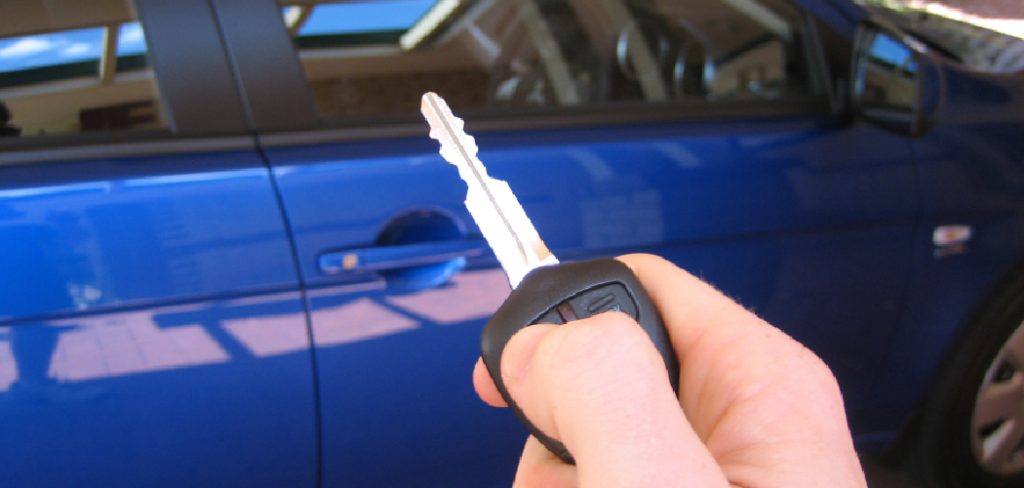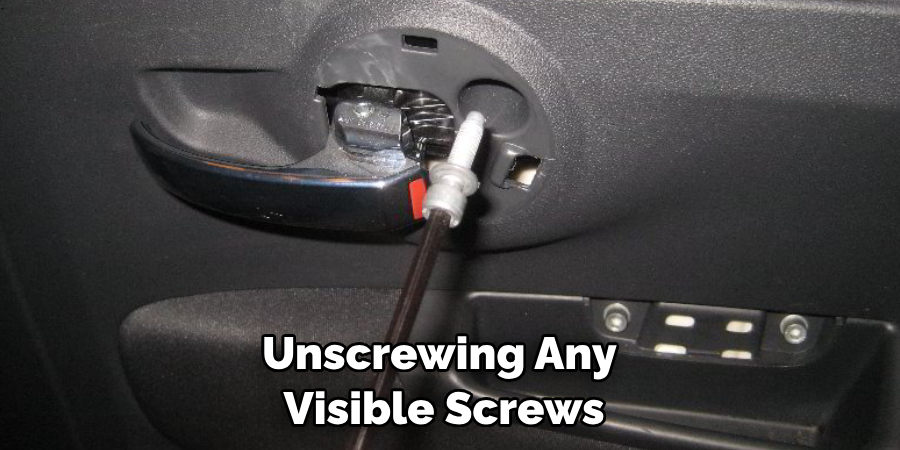Do you ever worry about the safety of your car and its contents? Luckily, there are some simple steps you can take now to ensure that your vehicle is protected from unauthorized access. Changing the locks on a vehicle isn’t as daunting an undertaking as it may first seem, and in this blog post, we’ll guide you through changing car locks quickly and safely.

We’ll cover why it’s important to change your locks regularly, offer tips for when choosing new ones, detail various methods for replacing them, and provide step-by-step instructions showing how to easily install them yourself.
So don’t wait another minute – read on to discover all that you need to know about how to change car locks!
Why Change Your Car Locks?
It’s important to take regular steps to protect your vehicle from potential theft or vandalism. Changing car locks is a simple and cost-effective way of doing this, as it prevents anyone with a copy of the old key from accessing your vehicle. It can also give you peace of mind if you have recently lost or misplaced a key – replacing the locks guarantees that no one else will be able to use it.
Additionally, if your vehicle is an older model, changing car locks can help to improve security, as newer models often feature more advanced lock systems and are less likely to be vulnerable to picking or tampering.
What Will You Need?
The first step in changing car locks is identifying the tools and materials you need. Depending on the make and model of your vehicle, as well as the type of lock, there may be slight differences when it comes to replacing the locks. However for most vehicles, you will require:
- Screwdriver
- Socket wrench set
- Replacement door locks
- Lubricant (if necessary)
Once you have gathered all the necessary tools and materials, you can begin changing car locks.
10 Easy Steps on How to Change Car Locks
Step 1. Remove the Door Panel:

Start by removing the interior door panel to access the lock mechanism. This usually involves unscrewing any visible screws around the door handle and lower panel. Be careful not to pull or yank the panel too hard, as it could damage the wiring for your windows and locks.
Step 2. Disconnect the Control Rods:
Once the door panel is removed, you’ll see one or two control rods, depending on your car model. These rods connect the lock cylinder to the latch mechanism. Carefully disconnect these rods. They are usually held in place by plastic clips. Simply unclip them, but remember to take note of their original positions for re-installation.
Step 3. Remove the Lock Cylinder:
The lock cylinder is usually held in place by a clip or screw. Locate this and carefully remove it, then the lock cylinder should be able to be pulled out from the door. Be gentle during this process to avoid causing any damage to the parts. Remember to keep track of any small parts or screws, as you will need them for the re-installation of the new lock.
Step 4. Insert the New Lock Cylinder:
After successfully removing the old lock cylinder, it’s time to install the new one. Align it correctly with the hole in the door and carefully push it into place. Make sure it’s completely secure and sitting flush with the door before moving on to the next step. This is critical for ensuring the proper functioning of your new lock.
Step 5. Reconnect the Control Rods:

Now that the new lock cylinder is in place, you must reconnect the control rods. Remember the original positions you noted earlier? It’s time to use that information. Clip the rods back to the new lock cylinder in the same positions they were in before. This is a crucial step as the control rods are what enable the lock and unlock function of your door. Make sure they are securely connected and check the function before proceeding.
Step 6. Test the New Lock:
Before reassembling everything, testing the new lock to ensure it’s working correctly is important. Use the new key and turn the lock to both the locked and unlocked positions. Double-check your installation if the lock is not functioning smoothly or the key isn’t turning. Make sure the control rods are securely connected, and the lock cylinder is seated properly.
Step 7. Reattach the Door Panel:
Once you are satisfied with the operation of the lock, it’s time to put the interior door panel back. Carefully align it with the door frame and press it back into place. Then, reinstall any screws you removed at the beginning of the process.
Step 8. Repeat for Other Doors:
If you plan to change the locks on your car doors, simply repeat the steps outlined above for each door. It’s important to remember that the process may vary slightly depending on the make and model of your vehicle. Always refer to your vehicle’s service manual for specific instructions.
Step 9. Keep a Spare Key:
Once you’ve successfully changed all your locks, keep a spare key in a safe place. This is a good practice to avoid inconveniences if you lose your main key. Additionally, if you are replacing all the locks in your vehicle and have multiple keys, label each one clearly so you know which lock it is for.
Step 10. Dispose of the Old Keys:

Finally, it’s important to properly dispose of your old keys to maintain your vehicle’s security. Do not throw them in the trash. Instead, take them to a local locksmith or recycling center that can dispose of them properly.
By following these simple steps, you now know to change car locks yourself with ease. Whether it’s for additional security or replacing lost keys, changing car locks can be done quickly and cost-effectively.
5 Additional Tips and Tricks
- Invest in Quality Tools: Before changing your car locks, ensure you have reliable and quality tools. A sturdy screwdriver, a slim Jim, and a car lock kit should suffice. High-quality tools make your work easier and prevent unnecessary damage to your vehicle.
- Familiarize Yourself with the Mechanism: Before embarking on changing your car locks, it’s essential to understand how the lock mechanism works. You can find this information in the vehicle’s manual or through online resources. Understanding the lock mechanism will help you execute the task more efficiently and minimize potential errors.
- Practice Safety Measures: Always prioritize safety when changing car locks. Ensure the car is in park mode and the engine is off before you start. Having a well-lit workspace will also help you avoid any mishaps. Remember, safety comes first!
- Have a Backup Plan: It’s always better to be prepared for any eventualities when changing car locks. Ensure you have an extra set of keys or a spare keyless remote in case the process doesn’t go as expected.
- Seek Professional Assistance: If you still need to be more confident to change car locks on your own, it’s always a good idea to seek professional help. A trained mechanic or locksmith can guide you through the entire process and offer helpful advice.
Changing car locks is a challenging job, but following these tips and tricks can make the task a lot easier!
5 Things You Should Avoid

- Don’t Overlook Safety Measures: Always remember to follow the safety measures outlined in this article. Make sure you take proper precautions to avoid any risks and hazards.
- Don’t Use Unsuitable Tools: As you go through the process, ensure that all your tools suit the task. Using unsuitable tools can not only cause damage but also make the job a lot harder.
- Don’t Rush Through It: Changing car locks requires precision and accuracy, so take your time with the process. Take your time to execute it correctly and avoid any errors.
- Don’t Dismiss Professional Help: If you still need help with how to go about changing your car locks, feel free to seek professional assistance. A trained mechanic or locksmith can help you get the job done right.
- Remember to Test the Locks: After completing the job, ensure you test all the locks and check if they work properly. Doing this will give you peace of mind and ensure your safety in the long run.
With these tips in mind, you can change your car locks without any hassles.
Conclusion
In conclusion, how to change car locks is relatively easy, but it requires some thought and research. You can purchase new locks from a local automotive shop or online and install them yourself, saving time and money. If you find that replacing the locks is more complicated than expected or if you’d rather have a professional do it, take your car to a mechanic to ensure the job is done right.
By securing your vehicle’s safety, you can rest easy knowing your vehicle is well protected. Don’t wait another minute to take care of this important task!
Get started today in ensuring your keys are secure so that when the time comes, you will be able to get into a locked door.
About
Safety Fic is a distinguished figure in the world of Diy design, with a decade of expertise creating innovative and sustainable Diy solutions. His professional focus lies in merging traditional craftsmanship with modern manufacturing techniques, fostering designs that are both practical and environmentally conscious. As the author of diy, Safety Fic delves into the art and science of Safety Fic-making, inspiring artisans and industry professionals alike.
Education RMIT University
(Melbourne, Australia) Associate Degree in Design (Safety Fic) Focus on sustainable design, industry-driven projects, and practical craftsmanship. Gained hands-on experience with traditional and digital manufacturing tools, such as CAD and CNC software.
Nottingham Trent University
(United Kingdom) Bachelor’s in diyfastly.com and Product Design (Honors) Specialized in product design with a focus on blending creativity with production techniques. Participated in industry projects, working with companies like John Lewis and Vitsoe to gain real-world insights.
Publications and Impact
In diy, Safety Fic his insights on indoor design processes, materials, and strategies for efficient production. His writing bridges the gap between artisan knowledge and modern industry needs, making it a must-read for both budding designers and seasoned professionals.
